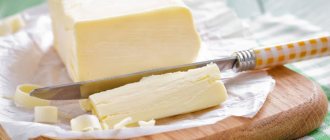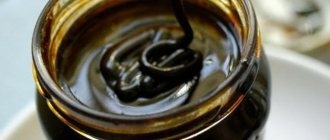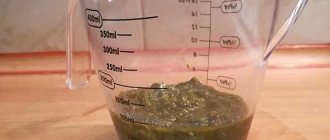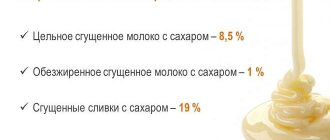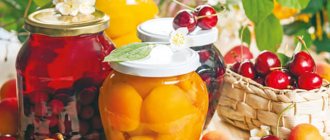There are situations when, some time after thick honey was poured into a certain container, in particular into jars, it began to separate, as a result of which it becomes inconvenient to use, since the heterogeneous structure dissolves much worse. Why honey stratification occurs and how to properly store this product to prevent this from happening.
Reasons for honey separation during storage
Depending on the reason for the appearance of separation in honey, it will be possible to understand whether the product is suitable for further consumption and whether it has lost its properties.
In most cases, the cause of separation is misgrading, which occurs if honey from different periods of pumping was mixed or honey that was collected in different weather conditions. Also, separation can occur if there are several types of honey, as a result of which they simply separate from each other due to differences in density and chemical composition.
As a result, denser honey ends up at the bottom, as a result of which the product in the jar becomes heterogeneous and flaky.
Also, the appearance of layers can be caused by different amounts of glucose and fructose in the product. Thus, glucose will promote hardening and crystallization of the product, while fructose, on the contrary, is aimed at maintaining a liquid consistency. If fructose and glucose are in approximately equal proportions in liquid honey, there is a very high probability that fructose will sink to the bottom, and crystallization of glucose will occur on top. The result is the appearance of separation of honey in the jar.
Video: Why honey is candied
The question arises: honey has become candied, what does this mean, how has its composition changed? The most common myth that exists about the transition of a treat from a liquid to a solid state is that people believe that during crystallization, sweetness loses most of its beneficial properties. However, it is not. During hardening, a physical process of transition from one state of aggregation to another occurs. However, the chemical composition remains the same.
Simple saccharides in the product are good preservatives; they retain microelements, vitamins and antiseptics. Some varieties with a dense structure can be stored for centuries without losing their nutritional qualities. Therefore, you can safely put an equal sign between liquid or candied honey.
Premature collection of immature liquid honey
Also, a fairly common reason for the product to separate when stored in a jar is premature collection of honey, as a result of which it turns out immature. After the bees have collected the nectar, it will take some time for the moisture to evaporate, and the resulting honey will be of sufficient quality that can be stored without any problems for a long time. If the humidity level remains high enough, that is, the liquid honey is not yet ripe for collection, the following consequences can be expected:
- Product separation as a result of even short-term storage.
- Risk of fermentation and foaming of the product.
- The appearance of an unpleasant sour odor as a result of fermentation
In order for the quality of honey to be at a sufficiently high level, it is recommended to start collecting it only at the moment when at least 70% of the available honeycombs are filled.
Interesting facts about crystallization
- If you add even just a little bit of what has already begun to sugar into fresh honey, the whole mass will crystallize very quickly. This is due to the fact that even in a rarefied honey product, for the appearance of candied “pieces”, only the growth of existing crystals is necessary.
- When the product begins to become cloudy, it will soon crystallize. This sure sign of the beginning of sugaring is caused by the formation of single crystalline formations floating in still small quantities in the honey liquid. When they begin to unite and grow, they will first turn into grains and then into pieces of candied honey.
- Any honey will crystallize, except if it was collected by bees from a chestnut or acacia tree. These varieties, when in their pure form, will retain viscosity and paste-like properties without the presence of solid elements.
- The hardening process begins from the walls and bottom of the container, where it is easier for crystals to attach, so light deposits on the bottom or walls (which can be seen in transparent jars) are another sign of the beginning of hardening.
- Thickening and hardening do not affect the properties of honey in any way. In general, under certain conditions it can be stored for a very long time and remain useful and fragrant. Cases have been recorded when during excavations they discovered a product whose age can be calculated in centuries or millennia, and it still smelled like honey.
Can high-quality natural honey separate?
Even the most natural 100% honey can separate for completely normal and natural reasons, which were described above: mixing several types of honey, violating the rules for assembling the product, or approximately equal levels of glucose and fructose in the product. In all these situations, honey must be separated into a maximum of 2 layers, otherwise the product cannot be considered of sufficient quality and 100% natural.
In order to determine that separation is not the cause of the collection of unripe honey or some other unnatural factors in natural honey, it will be enough to pay attention to the following criteria:
- There are no signs of fermentation or the appearance of foam on the surface of the honey.
- Lack of a pleasant honey smell without an admixture of sour notes.
- No pressure has built up inside during long-term storage
- A 1 liter container cannot contain more than 1.4 kg of natural honey
If all these criteria are met, then you can be sure that the product is of sufficient quality and natural.
Why is this happening?
Very often, after collecting honey or purchasing it, you will notice that it is divided into two parts of different color and consistency. Many people think that if honey flakes, then the product is artificial or significantly diluted. But in fact, delamination is not always a sign of poor quality.
There are many reasons why layer separation can occur:
- too early collection;
- overheating of the product;
- manipulations to increase volume;
- mixing different varieties;
- natural processes.
If you collect honey ahead of time, when the honeycombs are not yet completely filled, then it will contain too much water, since the bees do not have time to remove excess moisture. Such a product must be consumed as quickly as possible, since during long-term storage it will lose its beneficial qualities.
And after a while it may even ferment and become unfit for consumption. The only way to preserve such honey for a long time is to store it at a temperature of 5 to 10 degrees. It may continue to flake, but will not ferment.
Most types will delaminate after being overheated. Already at 35 degrees, processes can begin that lead to lamination, and when heated to 40 degrees, honey loses its beneficial qualities. This means that even if the product was simply transported on a hot day, it could succumb to lamination.
Of course, if you see that the honey on the counter has separated, then this may be a consequence of artificially increasing the volume of the product. Adding water, sugar syrup, starch and other substances causes it to become heterogeneous and separate into two parts.
What to do with separated honey?
If the product is separated, do not throw it away, as in some cases the situation can be corrected.
If the reason for the separation is completely normal, natural for this product, then you just need to mix it, after which it can be consumed.
If the reason was the early harvest of the product, as a result of which there was a lot of moisture left in it, it is recommended to use it for no more than 1 month, after which its shelf life will come to an end. When the first signs of fermentation appear, it is recommended to limit consumption of the product.
- Violation of honey storage rules. In this case, delamination may occur due to non-compliance with the temperature regime. If there are no signs of spoilage of the product, it should simply be mixed, after which it can be consumed. It is worth considering that if the product is heated excessively (over 700 degrees), it can no longer be eaten.
- Unnatural honey. If separation occurs due to the fact that the honey is unnatural and of poor quality, eating it is highly discouraged, as this can lead to serious health problems!
You should not buy honey in the summer, as at this time it is difficult to say anything about its quality.
Storage violation
Candied honey is a homogeneous mass in which crystallization nodes, namely glucose, which is most susceptible to this process, are evenly distributed. Fructose is in a free state, enveloping glucose crystals. Glucose forms a crystal lattice even at low temperatures - about 15 degrees, while for glucose their limit is approximately twice as high - 28 degrees.
If a sugared product is exposed to either low or high temperatures for a long time, the process of heavier glucose molecules settling down is inevitable, while fructose rises up.
If the temperature fluctuation did not exceed 40 degrees, then having provided the honey with the necessary storage conditions, it is enough to mix it until smooth and use it further: a certain proportion of its healing properties is preserved.
It must be remembered that natural nectar processed by bees requires careful handling. “Live” biologically active compounds included in its composition require a certain storage regime.
Violation of honey storage
How to store honey so that it does not separate?
- The optimal temperature for storing natural honey is from -5 to 18 degrees.
- In order to avoid excessive moisture absorption, it is recommended to tightly close the dishes with a lid or cling film to achieve a tight seal.
- Air humidity should not exceed 75% where the product is stored.
- In order to avoid reaction with dishes, it is recommended to store the product in glass or earthenware; you can also use wood. It is not recommended to use enamel dishes or metal containers, as well as plastic and aluminum, as they will react with the acidic honey environment.
© Mulyukov S.G., author of articles, director of Bashkir Apiaries + LLC, 2021, https://www.facebook.com/sergey.mulyukov



